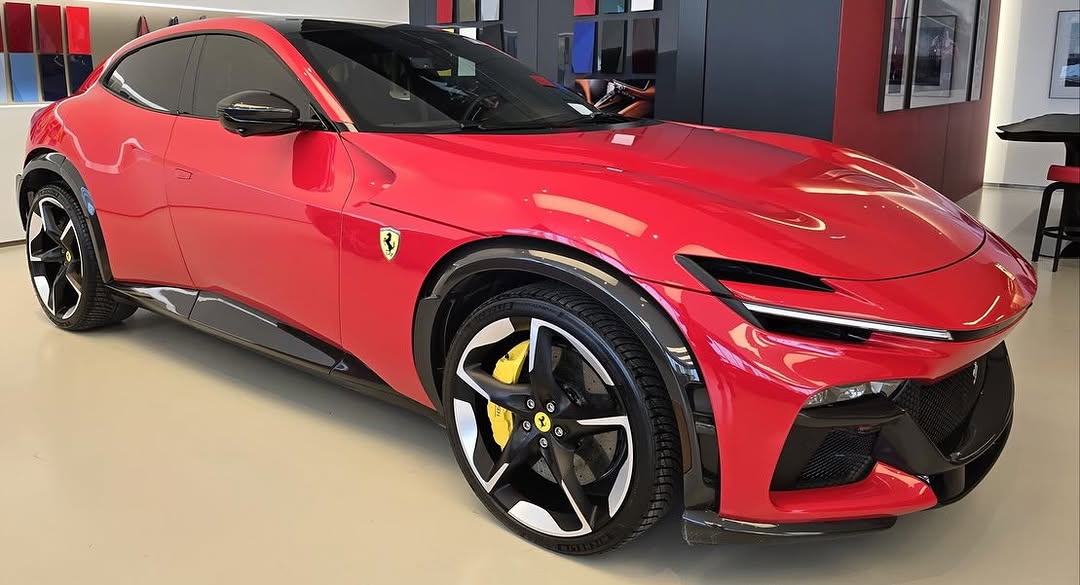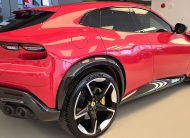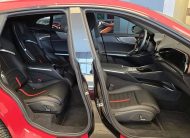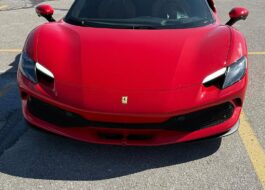- Overview
- Technical Specifications
- Location
Overview
Ferrari arrived fashionably late to the super-SUV party. But what an entrance. The Purosangue SUV sure is pretty, and it was designed and engineered to be a Ferrari first, with a broad-shouldered look and a wide, low stance. Rear doors and a livable back seat are there to satisfy buyers' desire for a Ferrari "family car" but nothing distracts from the Purosangue's true purpose: to thrill. With its 715-hp, naturally aspirated V-12, an all-wheel-drive system adapted from the Ferrari FF's, and a novel active suspension that almost eradicates body roll, the Purosangue is even more special than its high-dollar competitors from the super-sports-car brands. Those include the Lamborghini Urus, the Porsche Cayenne Turbo, and the Aston Martin DBX. There are some quirks, however, including a steering wheel overloaded with controls and the lack of a center touchscreen to manage vehicle functions—a fussy, inscrutable haptic system takes its place—but we expect buyers will look past those issues and the $400k-plus price tag and appreciate this low-slung four-door for what it is: a beautiful Ferrari that happens to have four seats.
A host of luxury and performance features come standard on the Purosangue, but Ferrari does have some options that buyers may want to consider. Massaging front seats might be a nice thing to have after a long day of cruising down the Monte Carlo coast, and sunseekers may be tempted by the available electrochromic glass roof. Either way, we’d suggest making liberal use of Ferrari’s personalization options to create a Purosangue that’s puro you.
Engine, Transmission, and Performance
To purists scoffing at an SUV wearing the famed prancing-horse badge, we’ll point to the naturally aspirated 6.5-liter V-12 engine lurking under the Purosangue’s hood. Nothing says Ferrari more than a screaming twelve-cylinder, this one making 715 horsepower and 528 pound-feet of torque, and it even wears the brand’s signature red-painted valve colors. We came away from our initial test drive quite impressed with the Purosangue's handling and performance, alleviating any remaining doubt we had that Ferrari's first SUV would be a dud. An adaptive suspension system is standard and uses an electric motor at each corner of the SUV to apply force to the dampers during cornering maneuvers to quell body roll. As such, the Purosangue has no need for traditional anti-roll bars, and it can also hunker down during hard driving by reducing its ride height by 0.4 inches. At full chat, the Purosangue does its best impression of its sports car siblings.
0–60-MPH Times
We haven't yet had the opportunity to fully test the Purosangue, but we estimate that it should reach 60 mph in just 3.2 seconds on its way to a claimed top speed of 193 mph.
Fuel Economy and Real-World MPG
Kiss your gas money goodbye: The V-12-powered Purosangue is one of Ferrari’s least fuel-efficient offerings. The EPA estimates it's good for only 11 mpg city and 15 mpg highway, but for context, both the Urus and the 12-cylinder Bentayga earn similar ratings of 12 mpg city, 17 mpg highway. Not that fuel economy matters in this crazy SUV league. Nevertheless, in the interests of science, when we get a chance we'll take the Purosangue on our 75-mph highway fuel-economy route and update this story with its test results. For more information about the Purosangue’s fuel economy, visit the EPA's website.
Interior, Comfort, and Cargo
As the only current Ferrari to offer legitimate room for four riders, the Purosangue is outfitted with a set of slick rear-hinged coach-style (also called “suicide”) rear doors that are said to make it easier to access the back seat while preserving a two-door appearance. The front and rear seats are individual buckets, meaning there’s no bench in the back for an occasional fifth passenger, and both rows have a center console. Of course, the interior is swathed in Ferrari-quality materials. To say that the cockpit is driver-oriented would be an understatement as most of the car’s controls are operated through the steering wheel; a big surprise in this era of tablet-style center-stack screens is that there is no center-mounted infotainment touchscreen. A glass roof is optional but if you don’t care about seeing the sun while driving, sticking with the standard carbon-fiber roof panel will save some weight.











